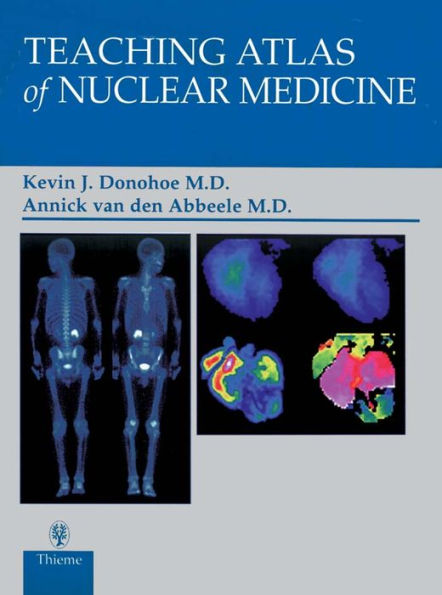Teaching Atlas of Nuclear Medicine
Each volume in Thieme's new Teaching Atlas series features a wide range of challenging cases in radiology, and is ideal for both self-assessment and review. All cases stress the "real-life" presentation of a specific clinical problem, beginning with high-quality radiographs and followed by patient history, radiographic findings, differential-diagnosis, discussion, and suggestions for further reading. Highlighted "Pearls," "Pitfalls", and "Controversial Issues" round out the presentation of each case and provide the reader with hundreds of useful hints and recommendations. A must for residents rotating in sub-specialties or studying for board examinations, the Teaching Atlas series is also a useful review for experienced practitioners.
In the TEACHING ATLAS OF NUCLEAR MEDICINE, you'll find comprehensive coverage of the entire field of nuclear medicine through a series of clearly presented cases. Following the board exam format, the cases are presented as unknowns, with an image and brief clinical description; you are then asked to arrive at your own differential diagnosis. Complete with tips, pearls, pitfalls, and a brief discussion of each case, this is the ideal book for self-testing and maximizing your study time.
Teaching Atlas of Nuclear Medicine
Each volume in Thieme's new Teaching Atlas series features a wide range of challenging cases in radiology, and is ideal for both self-assessment and review. All cases stress the "real-life" presentation of a specific clinical problem, beginning with high-quality radiographs and followed by patient history, radiographic findings, differential-diagnosis, discussion, and suggestions for further reading. Highlighted "Pearls," "Pitfalls", and "Controversial Issues" round out the presentation of each case and provide the reader with hundreds of useful hints and recommendations. A must for residents rotating in sub-specialties or studying for board examinations, the Teaching Atlas series is also a useful review for experienced practitioners.
In the TEACHING ATLAS OF NUCLEAR MEDICINE, you'll find comprehensive coverage of the entire field of nuclear medicine through a series of clearly presented cases. Following the board exam format, the cases are presented as unknowns, with an image and brief clinical description; you are then asked to arrive at your own differential diagnosis. Complete with tips, pearls, pitfalls, and a brief discussion of each case, this is the ideal book for self-testing and maximizing your study time.

Teaching Atlas of Nuclear Medicine
512
Teaching Atlas of Nuclear Medicine
512
Product Details
| ISBN-13: | 9781638531760 |
|---|---|
| Publisher: | Thieme Publishers New York |
| Publication date: | 01/01/2011 |
| Series: | Teaching Atlas Series |
| Sold by: | Barnes & Noble |
| Format: | eBook |
| Pages: | 512 |
| File size: | 24 MB |
| Note: | This product may take a few minutes to download. |
